Notebook - July 7, 1999
Stevenson to close
Diverse community of students, faculty will probably end up in Frist
To the dismay of students and faculty members who dine at Stevenson Hall,
the university-sponsored eating club, the university will close the club's
dining hall, located at 91 Prospect Avenue, in the fall of 2000 when the
Frist Campus Center opens. The university will also probably force the club
to relocate its lounges, library, computer clusters, and café from
83 Prospect Avenue.
Both 91 and 83 Prospect Avenue will be used for offices when East Pyne
undergoes renovation, said Allen J. Sinisgalli, associate provost for research
and project administration.
Dean of Students Janina Montero and members of Stevenson will use next
year to determine where the Stevenson community will relocate. The most
likely spot would be a space in the campus center, said Montero. But they
are also looking at other possibilities around campus, including continuing
to use the basement café in 83 Prospect Avenue. Although there are
no plans for setting aside a separate room in Frist for the Stevenson habitués,
said Montero, there are intimate spaces that might support the club's social
and dining needs. Some students, however, are skeptical that Frist could
provide an intimate setting.
Stevenson was formed as a nonbicker, university-managed dining facility
at the initiative of undergraduates in the classes of 1968 and '69. It is
home to a socially, academically, and ethnically diverse group of undergraduates,
graduate students, and faculty members. It attracts those students who are
turned off by the social atmosphere and heavy drinking associated with the
eating clubs on the Street.
"Stevenson is one of the few places on campus where members of minority
groups feel comfortable," wrote Joseph Bulbulia *93, an assistant manager
of residential colleges, in an
op-ed column in The Daily Princetonian.
Stevenson provides a welcoming, open atmosphere, said Kitanya Harrison
'00, Stevenson's executive-board president. "No one is excluded."
Because of the mix of students and faculty, Stevenson is "like a precept
but better," she added.
"We all look forward to Frist," graduate student Harry Bone
wrote in another column in the Prince, "but no one believes
that it can 'replace' Stevenson, any more than it could replace any other
club or college."
-- Kathryn Federici Greenwood
Fifteen faculty members retire
Fifteen professors are transferring to emeritus status: Victor H. Brombert
(Romance languages and literatures and comparative literature), Clarence
F. Brown (comparative literature), R. Elaine Fantham (Latin), Wen C. Fong
'51 *58 (art history), Harold P. Furth (astrophysical sciences), Irvin Glassman
(mechanical and aerospace engineering), J. Lionel Gossman (Romance languages
and literatures), Richard C. Jeffrey *57 (philosophy), Yu-Kung Kao (East
Asian studies), Russell M. Kulsrud (astrophysical sciences), Sau-Hai Lam
*58 (mechanical and aerospace engineering), Arnold J. Levine (life sciences),
James H. Marrow (art and archaeology), Goro Shimura (mathematics), and Charles
F. Westoff (demographic studies and sociology).
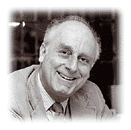 A specialist in French and comparative literature of the 19th and 20th
centuries, Brombert has been a member of the faculty since 1975.
His interests also include the history of ideas and comparative studies
of narrative. Among other courses, he has taught Modern European Writers
(Literature 141) for the past 12 years to more than 300 undergraduates each
fall. From 1983 to 1994, he directed the Christian Gauss Seminars in Criticism,
and he chaired the Council of the Humanities from 1989 to 1994. A native
of Paris, he earned his Ph.D. from Yale in 1953. At Commencement, he received
the 1999 President's Award for Distinguished Teaching.
A specialist in French and comparative literature of the 19th and 20th
centuries, Brombert has been a member of the faculty since 1975.
His interests also include the history of ideas and comparative studies
of narrative. Among other courses, he has taught Modern European Writers
(Literature 141) for the past 12 years to more than 300 undergraduates each
fall. From 1983 to 1994, he directed the Christian Gauss Seminars in Criticism,
and he chaired the Council of the Humanities from 1989 to 1994. A native
of Paris, he earned his Ph.D. from Yale in 1953. At Commencement, he received
the 1999 President's Award for Distinguished Teaching.
Brown, whose field is the interpretation of modern Russian writing,
came to Princeton in 1959. He has taught courses on Russian language and
literature, on the forms of short fiction, and the literature of fantasy
and reality. Brown, who earned his Ph.D. in Russian Literature from Harvard
in 1962, is also a cartoonist. His work has appeared in the Saturday
Review, Esquire, Playboy, and The Village Voice, among
others.
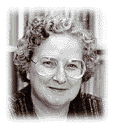 Fantham has been Giger Professor of Latin since 1986. Her main
interests are Roman comedy and rhetoric, Latin epic, Roman religion, and
the social history of Roman women. Born in England, Fantham earned her Ph.D.
at the University of Liverpool in 1962. At Princeton, she chaired the classics
department from 1989 to 1992, and she directed the Program in the Ancient
World.
Fantham has been Giger Professor of Latin since 1986. Her main
interests are Roman comedy and rhetoric, Latin epic, Roman religion, and
the social history of Roman women. Born in England, Fantham earned her Ph.D.
at the University of Liverpool in 1962. At Princeton, she chaired the classics
department from 1989 to 1992, and she directed the Program in the Ancient
World.
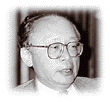 A scholar of Chinese art history, Fong was born in Shanghai and
received a classical Chinese education, including training as a painter
and calligrapher. He joined the faculty in 1954. From 1961 to 1998 he directed
the graduate program in Chinese and Japanese art and archaeology. In 1959
he established Princeton's Far Eastern Seminar Archives, which include more
than 50,000 photographs of Chinese and Japanese paintings. Faculty curator
of Asian art at the Art Museum, Fong has been head of the Asian Art Department
at the Metropolitan Museum of Art in New York City for the past three decades.
A scholar of Chinese art history, Fong was born in Shanghai and
received a classical Chinese education, including training as a painter
and calligrapher. He joined the faculty in 1954. From 1961 to 1998 he directed
the graduate program in Chinese and Japanese art and archaeology. In 1959
he established Princeton's Far Eastern Seminar Archives, which include more
than 50,000 photographs of Chinese and Japanese paintings. Faculty curator
of Asian art at the Art Museum, Fong has been head of the Asian Art Department
at the Metropolitan Museum of Art in New York City for the past three decades.
Furth has made a career of research on controlled fusion, including
10 years as director of the Princeton Plasma Physics Lab. A native of Vienna,
he earned his Ph.D. at Harvard in 1960. In the 1960s, Furth and others offered
a correct theoretical description of instabilities arising due to resistance
in a plasma. Later, he and two others described a method for using energized
ion beams to heat a plasma in such a way as to speed fusion reactions --
the breakthrough that allowed the Tokamak Fusion Test Reactor to approach
the milestone called breakeven, in which the power derived from fusion reactions
equals the power put into the plasma.
Glassman is an authority on combustion as applied to problems
in energy production, pollution, propulsion, and fire safety. He earned
his D.Eng. degree from Johns Hopkins University in 1950, the year he joined
the faculty at Princeton. He has received numerous teaching honors. In 1980
students voted his course on Fossil Fuel Energy Conversion as the number
one course at Princeton. In 1972 Glassman founded the university's Center
for Energy and Environmental Studies, which conducts fundamental research
as well as public-policy analysis.
Gossman's interests focus on the relationship between history
and literature in 17th- through 19th-century Europe. At Princeton since
1976, he has taught courses on French literature of the 17th and 18th centuries
and on European literature and politics of the 19th century. Born in Scotland,
Gossman earned his D.Phil. at Oxford in 1957.
Jeffrey is an expert in probability and decision theory. He also
teaches logic and the philosophy of science. He earned his Ph.D. in philosophy
at Princeton in 1957 and joined the faculty in 1974. Author of five books,
Jeffrey presented a new theory of decision-making under uncertainty and
of probable knowledge in The Logic of Decision (1965).
Kulsrud's pioneering work on high- energy plasmas includes methods
for predicting the formation of instabilities and developing techniques
for better controlling the reaction. Kulsrud earned his Ph.D. from the University
of Chicago in 1954, the year he joined the research staff of Project Matterhorn,
Princeton's effort to develop controlled nuclear fusion. In 1962 he joined
the staff of the Plasma Physics Lab as senior research physicist, and in
1964 he became a lecturer in the astrophysical sciences department. After
a year as professor in applied sciences at Yale, Kulsrud returned to Princeton
in 1967.
Kao's field is Chinese literature, particularly classical poetry
and vernacular fiction. Among Kao's writings are studies of the aesthetic
underpinnings of form in T'ang verse and of the evolution of lyric vision
in Chinese narrative. He has taught courses on Chinese poetry, fiction,
and drama. A native of Mukden, China, Kao earned his Ph.D. in history at
Harvard in 1962 and joined the Princeton faculty the following year.
Lam, who joined the faculty in 1960, has made research and teaching
contributions in fluid mechanics, plasma and reacting gas dynamics, thermionic
energy conversion, chemical and molecular kinetics, control theory, and
applied mathematics. As a teacher, Lam has earned a reputation for expressing
complicated ideas in a simple way. From 1972 to 1980, he was chairman of
the engineering physics program. In the 1980s, he was chairman of the Department
of Mechanical and Aerospace Engineering, cochairman of the Program in Applied
Mathematics, and associate dean of the engineering school.
Levine, an authority on the molecular basis of cancer and founding
chair of the molecular biology department, left Princeton last summer to
assume the presidency of Rockefeller University. Levine earned his Ph.D.
in 1966 from the University of Pennsylvania School of Medicine. Two years
later, he joined the faculty at Princeton. In 1979 he became chairman of
the department of microbiology at the SUNY, Stony Brook School of Medicine.
He returned to Princeton to found the Department of Molecular Biology in
1984 and to become Wiess Professor.
Marrow, who came to Princeton in 1991, is a specialist in art
of the late Middle Ages in Northern Europe. At Princeton, he taught courses
on painting, printmaking, illuminated books and iconography, as well as
seminars on Dürer, Fouquet, Bosch, and van Eyck. Marrow received his
Ph.D. from Columbia in 1975. Currently a visiting fellow at Corpus Christi
College, Cambridge, he is collaborating on major exhibitions of illuminated
manuscripts at the Philadelphia Museum of Art and at the New York Public
Library.
Mathematician Shimura has focused on finding relations among diverse
areas of number theory, geometry, and algebra. His work has been instrumental
in establishing the modern theory of automorphic forms and especially the
theory's relation to arithmetical geometry and number theory. His guiding
philosophy, Shimura says, is that for many geometric objects, there is a
natural way of presenting them other than the conventional mathematical
expressions. Shimura earned his D.Sc. at the University of Tokyo in 1958
and came to Princeton in 1962.
Westoff, former director of the Office of Population Research,
has studied fertility and family planning in the United States and developing
countries, as well as population policy. After serving in the Navy, Westoff
earned his Ph.D. from the University of Pennsylvania in 1953. Two years
later, he joined the Office of Population Research. He joined the Princeton
faculty as professor of sociology in 1962 and served as the director of
OPR from 1975 to 1992.
Making wavelets
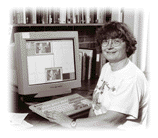 One of the great defenses of the human mind is our ability to use technology
without worrying about how it works. Most of us will happily go out for
a Sunday drive without giving a moment's thought to the mechanical complexities
of the internal combustion engine. And when's the last time you stopped
to consider that the sweet tones of your favorite CD are really a string
of stored numbers, retranslated into sound?
One of the great defenses of the human mind is our ability to use technology
without worrying about how it works. Most of us will happily go out for
a Sunday drive without giving a moment's thought to the mechanical complexities
of the internal combustion engine. And when's the last time you stopped
to consider that the sweet tones of your favorite CD are really a string
of stored numbers, retranslated into sound?
This same sort of mathematical deconstruction is used every time you
read a word on a computer screen, make an ATM transaction, or snap a digital
photograph. In fact, the ability to interpret and electronically store or
reproduce any signal -- whether it's a collection of sound waves, a series
of characters, or a set of tiny dots that make up a picture -- depends on
being able to turn that signal into numerical data that can be read by a
computer. Signal processing involves the search for ever more efficient
and elegant ways of doing this, and wavelet researchers are at the cutting
edge of that effort -- literally.
"Wavelets help us look at mathematical functions with sharp transitions,
which represent the 'edges' of the function," explains Ingrid C. Daubechies,
a soft-spoken professor of mathematics and applied and computational mathematics,
and one of the world's leading experts on wavelet theory. "By that,
I mean places where the signal changes abruptly -- for example, the points
where a picture suddenly turns from light to dark."
Traditional wave-processing techniques have always had a hard time describing
edges. Mathematicians can use classical wave theory (known as Fourier transformations)
to graph these sudden changes, but information about when the changes occur
gets lost in the process. Wavelets are designed to overcome this limitation:
They are mathematical scaling functions that can be stretched out to evaluate
the broad features of long, continuous signals (like a swath of blue sky
or the hum of background noise) or compressed to evaluate a sudden frequency
change (the point at which the sky meets the edge of a building, or someone
strikes a cymbal). Different areas of the signal are represented by different
coefficients of those wavelets, allowing the entire signal, edges and all,
to be succinctly expressed by a list of coefficients -- in other words,
as a simple string of numbers.
"Daubechies' Wavelets"
By choosing the right wavelet, an engineer or statistician can efficiently
compress and store both the frequency and timing of even the most varied
signals, in much the same way an orchestral score records the spacing and
pitch of musical notes. "It's not that we can do things we couldn't
do before," explains Daubechies. "Wavelet theory allows various
applications to be done better -- including analyzing data, compressing
data, and using data to make computations."
With wavelets, applications are the name of the game. In 1985, as a newly
tenured researcher in her hometown of Brussels, Belgium, Daubechies made
her first breakthrough by building on the discoveries of geophysicists,
mathematicians, and engineers who were already employing a version of wavelets
that required the use of mathematical approximations. "It seemed a
pity to have to truncate that beautiful math," she recalls. "I
thought, 'What if I could come up with a different type of wavelet -- one
associated with an algorithm that could accomplish the same thing without
approximations?'"
After four months of intense work, she had her algorithm -- the first
of a family of mathematical scaling functions known collectively as "Daubechies'
Wavelets." She published her seminal paper with a set of precalculated
tables -- a practice common for engineers, but almost unheard of in mathematical
journals. These tables allowed readers to put her theory into use instantly.
"Without those tables, I don't think the paper would have had the
same impact," says Daubechies with a smile. She is seated in her second-floor
Fine Tower office, where the window looks out over an expanse of green lawn.
The symbolism -- in the ivory tower, yet viscerally grounded -- seems apt.
Though her work focuses on mathematical theory, Daubechies was raised as
the daughter of a mining engineer and trained as a physicist. She logged
seven years as a researcher at AT&T's Bell Labs, and spends a good bit
of time giving presentations on wavelets to electrical engineers, statisticians,
computer scientists, and other applied-math types.
"I've always been interested in applications -- that's what makes
me tick," says Daubechies, who joined the faculty in 1993. "I
like to talk to engineers about what they're doing, then trace their ideas
back to the underlying mathematics."
Compressing FBI files
These days, engineers are listening to her as well. The list of uses
for wavelets is long and growing: they're already a staple in astronomy,
acoustics, neurophysiology, magnetic resonance imaging, speech discrimination,
image processing, optics, and sonar and radar technology, to name just a
few fields. The FBI plans on using wavelet techniques to compress their
fingerprint files electronically (digitized fingerprints require about 20
times less computer space than the next best method), and software companies
are busy hawking do-it-yourself wavelet application programs.
While the impact of wavelet theory continues to ripple outward, Daubechies
remains the quintessential calm center. A mother of two (Carolyn, age 8,
and Michael, age 11) and the first tenured woman in the math department,
she is more interested in showing a visitor the Website for Math Alive,
her undergraduate math course for nonmathematicians, than in talking about
her own renown. In one of the course's online labs, a student can employ
rudimentary wavelet theory to decompose a photo of two parrots into a numerical
data
base, then reconstruct the photo with varying degrees of clarity, depending
on which mathematical parameters are chosen.
"I find that a lot of students had calculus in high school and didn't
like it," she says. "I wanted to teach a different kind of course
for students without a predisposition for math, that explains how these
mathematical tools are used in everyday life -- in CD players, and transmitting
credit-card information, things like that. I think mathematics is beautiful
-- but if you haven't been struck by its beauty, studying math is like taking
a poetry course that focuses only on rhyming schemes and other techniques,
while ignoring the impact of the words. It certainly wouldn't be as enjoyable!"
-- Royce Flippin '80
New editor for PAW
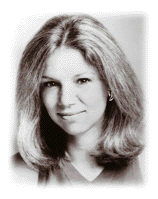 An award-winning journalist, Janice Harayda became editor of the Princeton
Alumni Weekly on July 1. Most recently she was the book editor and critic
for the Cleveland Plain Dealer and currently is vice-president for
awards at the National Book Critics Circle.
An award-winning journalist, Janice Harayda became editor of the Princeton
Alumni Weekly on July 1. Most recently she was the book editor and critic
for the Cleveland Plain Dealer and currently is vice-president for
awards at the National Book Critics Circle.
Harayda's editorial experience includes a stint as a staff writer for
Glamour and as editorial director for Boston magazine. She
has written a nonfiction book about being single and a comic novel, The
Accidental Bride (St. Martin's Press, 1999). Her book reviews have been
published in The Washington Post, The Chicago Tribune, and The
Philadelphia Inquirer, and she has written numerous freelance articles
for such newspapers as The New York Times, The Wall Street Journal,
and The Christian Science Monitor.
A resident of Princeton, Harayda will be the first paw editor who has
not held an undergraduate or graduate degree from Princeton. She replaces
J.I. "Jim" Merritt '66, paw's editor since 1989, who is leaving
to devote his full time to freelance writing and editing.
Harayda "has worked directly with some of the most respected magazine
editors in America," said Peter G. Brown '70, editor-in-chief of The
Sciences magazine and chair of the paw board of trustees. "She
grew up just north of town, and...Princeton has always been an important
presence in her life."
"Paw has a wonderful tradition of both independence and good journalism,"
said Harayda. "As an adolescent, I remember admiring dispatches by
the young Landon Jones '66 in a neighbor's copy of the Princeton Alumni
Weekly. They were a revelation to me. For the first time, I realized
that a vibrant publishing realm existed beyond the newspapers and mass-market
magazines that flowed into my parents' house."
Harayda's appointment was made by the magazine's board of trustees at
the recommendation of a search committee that included Brown; Jones, a former
paw editor who is currently vice-president of strategic planning for Time
Warner Inc.; and Elaine C. Showalter, a professor of English and the humanities.
In Memoriam
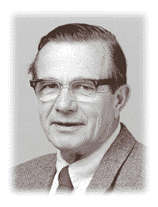 Sheldon Judson '40, the Knox Taylor Professor of Geology, Emeritus,
died on May 19. He was 80.
Sheldon Judson '40, the Knox Taylor Professor of Geology, Emeritus,
died on May 19. He was 80.
A member of the faculty since 1955, he was especially interested in the
relationship between the geosciences and archaeology. He was the author
of numerous geoarcheological reports, including several studies of paleo-Indian
sites in North America, as well as studies of late Paleolithic rock shelters
in France. He also worked extensively on Etruscan, Roman, and Greek sites
in Italy, and he recently completed a manuscript on the geology and geography
of Morgantina, an ancient Greek provincial city in Sicily.
Judson, who served in World War II in the Naval Reserve, completed his
Ph.D. in 1948 at Harvard. Chairman of his department at Princeton from 1970
to 1982, he was chair of the University Research Board with the rank of
dean from 1972 to 1977. He transferred to emeritus status in 1987. Judson
was the author or coauthor of a series of widely used textbooks, including
eight editions of Physical Geology and, most recently, Earth:
An Introduction to Geologic Change (1995).
Throughout his career, Judson worked to improve science education at
all levels. As emeritus professor he worked with the Teacher Preparation
Program to create summer workshops in geology, biology, and math for elementary
and middle school teachers.
In Brief
Endowed professorship: Charter trustee Anthony B. Evnin
'62 has made a $2.5 million gift to the university to endow the Anthony
B. Evnin '62 Professorship in Genomics. The Evnin chair is the first to
be created for Princeton's new Institute for Genomic Analysis, which will
take a multidisciplinary approach to examining how genes control the activities
of living organisms. Evnin is a general partner of Venrock Associates of
New York, a venture-capital partnership that specializes in information
technology and life-science investments. He serves as a director of the
Princeton University Investment Company, which oversees Princeton's endowment.
Ensemble in residence: The Brentano String Quartet has
been appointed quartet in residence, beginning next fall. The three-year
appointment marks the first residency by a musical ensemble at Princeton.
Visiting professors: Physicist Jocelyn Bell Burnell
and computer scientist Brian Kernighan *69 will hold the 250th Anniversary
Visiting Professorships for Distinguished Teaching next year. Bell Burnell,
currently a visiting fellow in the physics department, says, "I'm keen
to make physics more accessible to more people, and especially to increase
the number of women in the physical sciences." Her research interests
are in astrophysics, in particular, "the neutron stars or pulsars that
I discovered as a grad student."
Kernighan, who comes to the university from Bell Labs in Murray Hill,
New Jersey, plans to teach Computers in Our World. "It's for people
who don't expect to be doing computing in any technical field but want to
know what it's all about.... An educated person should have a good understanding
of how computer hardware, software, and networks operate."
GO TO
the Table of Contents of the current issue
GO TO PAW's
home page
paw@princeton.edu
 A specialist in French and comparative literature of the 19th and 20th
centuries, Brombert has been a member of the faculty since 1975.
His interests also include the history of ideas and comparative studies
of narrative. Among other courses, he has taught Modern European Writers
(Literature 141) for the past 12 years to more than 300 undergraduates each
fall. From 1983 to 1994, he directed the Christian Gauss Seminars in Criticism,
and he chaired the Council of the Humanities from 1989 to 1994. A native
of Paris, he earned his Ph.D. from Yale in 1953. At Commencement, he received
the 1999 President's Award for Distinguished Teaching.
A specialist in French and comparative literature of the 19th and 20th
centuries, Brombert has been a member of the faculty since 1975.
His interests also include the history of ideas and comparative studies
of narrative. Among other courses, he has taught Modern European Writers
(Literature 141) for the past 12 years to more than 300 undergraduates each
fall. From 1983 to 1994, he directed the Christian Gauss Seminars in Criticism,
and he chaired the Council of the Humanities from 1989 to 1994. A native
of Paris, he earned his Ph.D. from Yale in 1953. At Commencement, he received
the 1999 President's Award for Distinguished Teaching. Fantham has been Giger Professor of Latin since 1986. Her main
interests are Roman comedy and rhetoric, Latin epic, Roman religion, and
the social history of Roman women. Born in England, Fantham earned her Ph.D.
at the University of Liverpool in 1962. At Princeton, she chaired the classics
department from 1989 to 1992, and she directed the Program in the Ancient
World.
Fantham has been Giger Professor of Latin since 1986. Her main
interests are Roman comedy and rhetoric, Latin epic, Roman religion, and
the social history of Roman women. Born in England, Fantham earned her Ph.D.
at the University of Liverpool in 1962. At Princeton, she chaired the classics
department from 1989 to 1992, and she directed the Program in the Ancient
World. A scholar of Chinese art history, Fong was born in Shanghai and
received a classical Chinese education, including training as a painter
and calligrapher. He joined the faculty in 1954. From 1961 to 1998 he directed
the graduate program in Chinese and Japanese art and archaeology. In 1959
he established Princeton's Far Eastern Seminar Archives, which include more
than 50,000 photographs of Chinese and Japanese paintings. Faculty curator
of Asian art at the Art Museum, Fong has been head of the Asian Art Department
at the Metropolitan Museum of Art in New York City for the past three decades.
A scholar of Chinese art history, Fong was born in Shanghai and
received a classical Chinese education, including training as a painter
and calligrapher. He joined the faculty in 1954. From 1961 to 1998 he directed
the graduate program in Chinese and Japanese art and archaeology. In 1959
he established Princeton's Far Eastern Seminar Archives, which include more
than 50,000 photographs of Chinese and Japanese paintings. Faculty curator
of Asian art at the Art Museum, Fong has been head of the Asian Art Department
at the Metropolitan Museum of Art in New York City for the past three decades. One of the great defenses of the human mind is our ability to use technology
without worrying about how it works. Most of us will happily go out for
a Sunday drive without giving a moment's thought to the mechanical complexities
of the internal combustion engine. And when's the last time you stopped
to consider that the sweet tones of your favorite CD are really a string
of stored numbers, retranslated into sound?
One of the great defenses of the human mind is our ability to use technology
without worrying about how it works. Most of us will happily go out for
a Sunday drive without giving a moment's thought to the mechanical complexities
of the internal combustion engine. And when's the last time you stopped
to consider that the sweet tones of your favorite CD are really a string
of stored numbers, retranslated into sound? An award-winning journalist, Janice Harayda became editor of the Princeton
Alumni Weekly on July 1. Most recently she was the book editor and critic
for the Cleveland Plain Dealer and currently is vice-president for
awards at the National Book Critics Circle.
An award-winning journalist, Janice Harayda became editor of the Princeton
Alumni Weekly on July 1. Most recently she was the book editor and critic
for the Cleveland Plain Dealer and currently is vice-president for
awards at the National Book Critics Circle. Sheldon Judson '40, the Knox Taylor Professor of Geology, Emeritus,
died on May 19. He was 80.
Sheldon Judson '40, the Knox Taylor Professor of Geology, Emeritus,
died on May 19. He was 80.